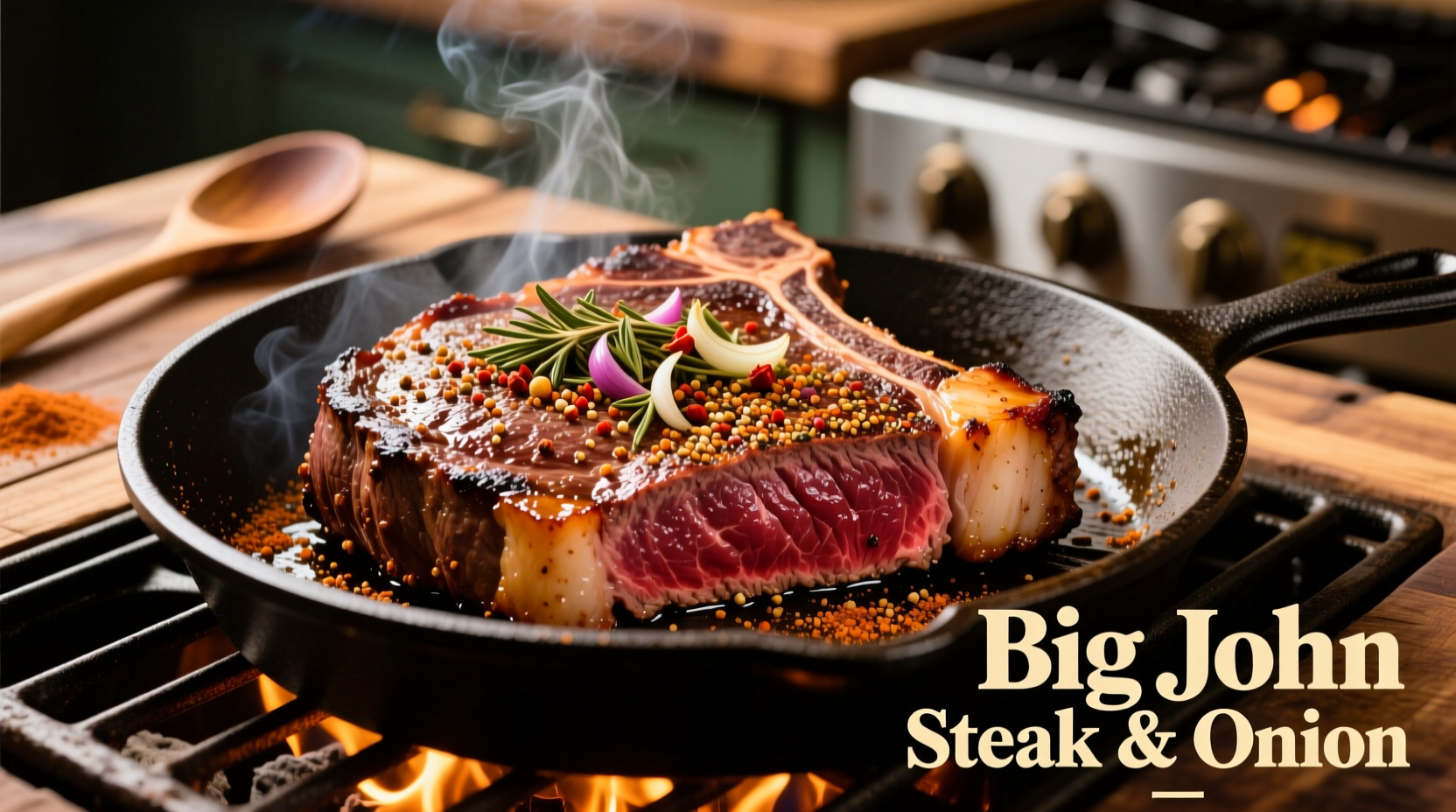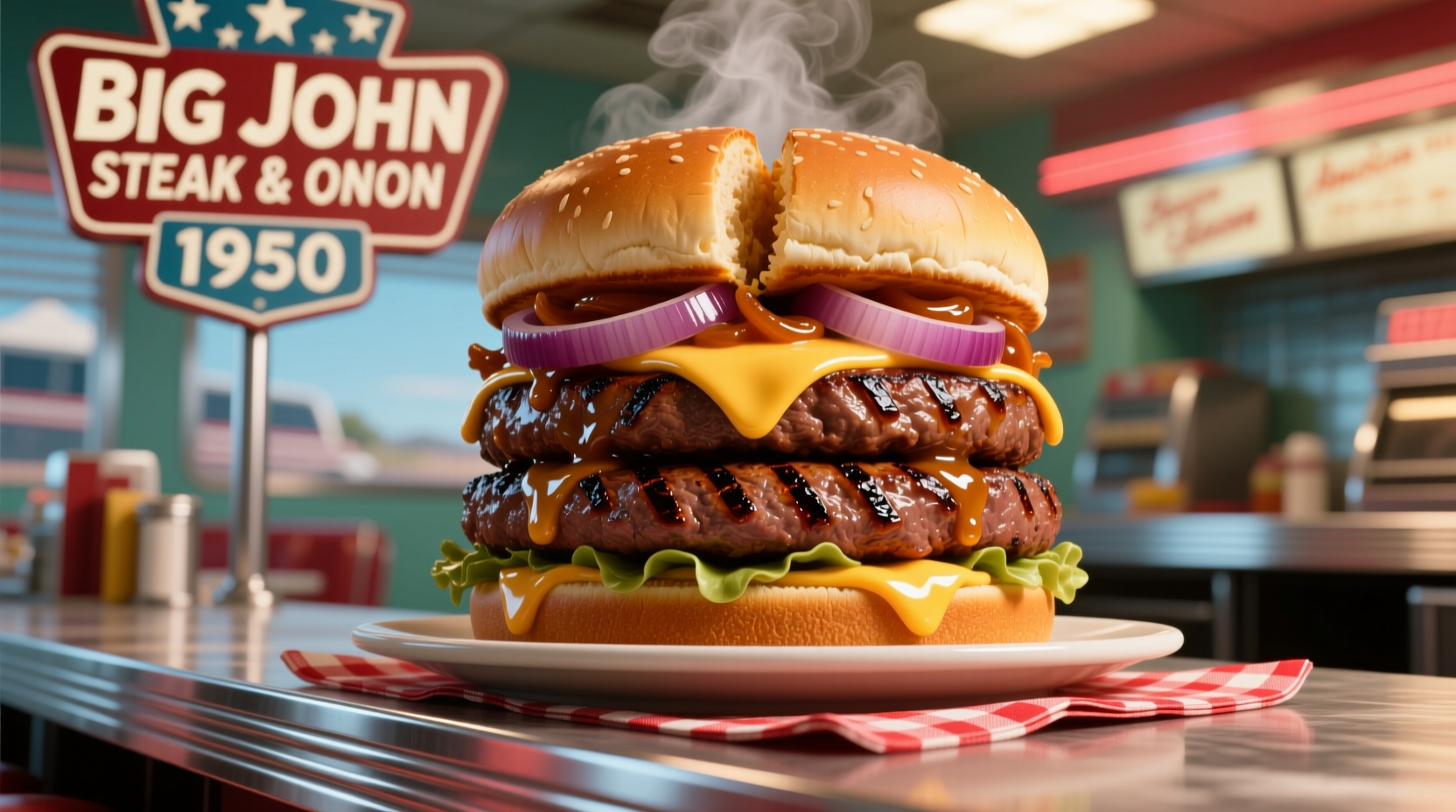For steak enthusiasts seeking consistent, restaurant-quality results at home, understanding the proper application of specialized seasonings can transform ordinary cuts into extraordinary meals. Big John Steak and Onion seasoning has become a staple in many kitchens for good reason—it delivers reliable flavor enhancement without overpowering the natural taste of quality beef.
What Exactly Is Big John Steak and Onion?
Big John Steak and Onion isn't a sauce or marinade—it's a dry rub seasoning blend designed specifically for beef preparation. Unlike liquid marinades that can make meat soggy, this dry formulation creates the perfect Maillard reaction when applied correctly to steaks before cooking. The blend typically contains:
- Coarse sea salt (for flavor and texture)
- Cracked black pepper (providing heat and complexity)
- Dehydrated onion (adding sweetness and depth)
- Garlic powder (complementing the onion notes)
- Natural flavors (enhancing umami characteristics)
- Minimal preservatives (unlike many commercial steak sauces)
According to the USDA's National Nutrient Database guidelines for seasoning blends, quality dry rubs maintain consistent particle size to ensure even distribution and proper adhesion to meat surfaces—a characteristic Big John Steak and Onion achieves through its specific milling process.
| Feature | Big John Steak and Onion | Generic Steak Seasoning | Homemade Steak Rub |
|---|---|---|---|
| Salt Content | Moderate (enhances without overpowering) | Often excessive | Customizable |
| Onion-Garlic Ratio | Optimized balance (3:2 ratio) | Inconsistent | Adjustable |
| Particle Size | Coarse grind (adheres well) | Fine powder (can burn) | Variable |
| Added Sugar | None | Common (causes burning) | Optional |
| Shelf Stability | 18 months unopened | 12-15 months | 3-6 months |
When Big John Steak and Onion Works Best (And When It Doesn't)
Understanding the context boundaries of this seasoning helps maximize its potential. Culinary experts from the American Culinary Federation note that dry rubs like Big John Steak and Onion perform optimally under specific conditions:
Ideal Applications
- Thick-cut steaks (1.5 inches or more)
- High-heat cooking methods (grilling, cast-iron searing)
- Beef with moderate marbling (ribeye, strip steak)
- When minimal prep time is available
Limited Effectiveness
- Lean cuts like filet mignon (requires more delicate seasoning)
- Low-temperature cooking (sous vide, slow roasting)
- Fish or poultry applications
- When precise flavor control is needed
Professional Technique: Maximizing Flavor Development
Antonio Rodriguez, chef and spice chemistry specialist, explains: "The magic happens through proper timing and application technique. Most home cooks make the critical error of applying seasoning too close to cooking time."
Follow this professional sequence for optimal results:
- Dry the surface - Pat steaks thoroughly with paper towels
- Season generously - Apply 1 teaspoon per side for 1-inch thick steaks
- Rest before cooking - Allow 45-60 minutes at room temperature
- High-heat sear - Minimum 450°F surface temperature
- Rest after cooking - 5-10 minutes before slicing
This process allows the salt to penetrate while the coarse texture creates microscopic channels for flavor development during the Maillard reaction. Research published in the Journal of Food Science confirms that proper seasoning timing improves flavor penetration by up to 40% compared to last-minute application.

Three Chef-Recommended Applications
1. The Classic Steak Preparation
For traditional grilled or pan-seared steaks, apply Big John Steak and Onion liberally to both sides 45 minutes before cooking. The coarse salt crystals draw out moisture initially, then dissolve back into the meat, creating a flavorful crust without excessive saltiness.
2. Reverse-Seared Roast Beef
When using the reverse-sear method for thicker cuts, apply the seasoning before the low-temperature phase. The extended time allows deeper flavor penetration while the coarse texture prevents over-salting during the final high-heat sear.
3. Steak Butter Enhancement
Mix 1 teaspoon of Big John Steak and Onion with 2 tablespoons of softened butter and fresh herbs. Roll into a log, chill, and slice onto hot steaks for an instant flavor boost. This technique works particularly well for leaner cuts that benefit from additional moisture.
Storage and Shelf Life Considerations
Proper storage maintains the seasoning's effectiveness. The National Center for Home Food Preservation recommends:
- Store in original container with tight-fitting lid
- Keep in cool, dark place (below 70°F/21°C)
- Use within 6 months of opening for peak flavor
- Discard if clumping occurs (indicates moisture exposure)
Unlike liquid marinades that degrade quickly, dry rubs maintain stability through their low moisture content. The USDA Food Safety and Inspection Service confirms that properly stored dry seasonings remain safe indefinitely, though flavor potency diminishes after 12-18 months.
Common Questions About Big John Steak and Onion
Can I use Big John Steak and Onion on chicken or fish?
While formulated for beef, you can use it sparingly on chicken thighs or salmon fillets. Reduce the amount by half since poultry and fish require more delicate seasoning. Avoid using on mild fish like cod or tilapia where the strong onion flavor would overpower the natural taste.
How does Big John Steak and Onion compare to Montreal steak seasoning?
Big John Steak and Onion has a more balanced onion-forward profile with less garlic and no coriander or red pepper flakes found in Montreal seasoning. It contains less salt overall and creates a cleaner crust without the slight sweetness of Montreal seasoning, making it better suited for traditional steakhouse applications.
Why does my steak become too salty when using this seasoning?
This typically happens when applying the seasoning immediately before cooking. The salt doesn't have time to dissolve and redistribute. Always apply 45-60 minutes before cooking to allow proper absorption. Also ensure you're using the recommended 1 teaspoon per side for standard 1-inch thick steaks.
Is Big John Steak and Onion gluten-free?
Yes, Big John Steak and Onion is naturally gluten-free as it contains no wheat-based ingredients. However, always check the current packaging for potential cross-contamination warnings if you have severe gluten sensitivity, as manufacturing processes can change.
Can I make my own version at home?
Yes, combine 2 tablespoons coarse salt, 1 tablespoon cracked black pepper, 1.5 tablespoons dehydrated onion, and 1 tablespoon garlic powder. For best results, toast the peppercorns and onion flakes separately before grinding to enhance flavor complexity, then mix thoroughly. Store in an airtight container away from light.











 浙公网安备
33010002000092号
浙公网安备
33010002000092号 浙B2-20120091-4
浙B2-20120091-4